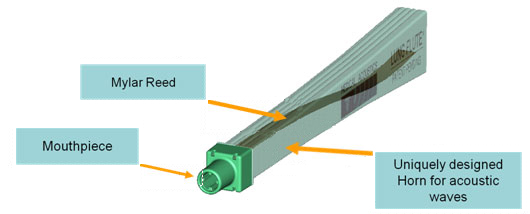 Scientists have discovered three new treatments for Chronic Obstructive Pulmonary Disease (COPD), the third leading cause of death in the U.S. Responsible for 130,000 deaths in America each year, COPD significantly hampers patients’ breathing, which becomes progressively labored over time. In an effort to develop innovative, new ways to treat the disease, researchers have developed three new treatments — all using novel, unique approaches to improving lung function and curtailing symptoms.
Scientists have discovered three new treatments for Chronic Obstructive Pulmonary Disease (COPD), the third leading cause of death in the U.S. Responsible for 130,000 deaths in America each year, COPD significantly hampers patients’ breathing, which becomes progressively labored over time. In an effort to develop innovative, new ways to treat the disease, researchers have developed three new treatments — all using novel, unique approaches to improving lung function and curtailing symptoms.
With COPD, patients’ lungs become overinflated due to air becoming trapped. Recently, surgeons have begun implanting tiny coils into COPD sufferers’ lungs in order to shrink them and restore elasticity. According to recent European studies, the experimental procedure is shown to improve lung function by 18 percent in study participants. As a result, the new lung coil technology is becoming increasingly popular in both the Unites and Europe.
“When you release them into the lungs, they just coil up and what they do is they draw the hyper-inflated lung close together,” said Atul C. Mehta, Professor of Medicine, at The Cleveland Clinic.
Patients who have had the coils implanted often still require supplemental oxygen. However, the use of the lung coils has a palpable effect on giving COPD patients relief, so that they feel as though they can get a deeper breath during exacerbations.

The second new COPD treatment is the Lung Flute, a medical device that improves lung congestion if used twice a day. UB School of Medicine and Biomedical Sciences professor Sanjay Sethi explained that the new device will clear mucus from the lungs, which in turn leads to higher quality of life among patients .
The Lung Flute technology produces low-frequency acoustic waves when the COPD patient blows into it. The acoustic waves are designed to reverberate into the lower airways and lung parenchyma to loosen secretions that are lodged deep in the lungs. The Lung Flute has been tested in clinical trials and is approved by FDA as a safe and effective form of treatment for COPD.
 Finally, a new drug therapy for COPD called azithromycin has also made headlines as a viable treatment for the disease. According to a recent study published in The New England Journal of Medicine, the drug, which in itself is a common antibiotic, measurably reduced the number of flare-ups in COPD patients. 570 study participants with COPD were given 250 milligrams of azithromycin daily for a year, while another set of 572 were given a placebo. Investigators found that, rather than giving a reactive course of antibiotics to stop a flare-up, using azithromycin long-term reduced flare-ups over the course of a year by 20 percent. This approach, which is used successfully in other diseases that affect the lungs, such as cystic fibrosis, appears to be effective when using azithromycin to treat COPD as well.
Finally, a new drug therapy for COPD called azithromycin has also made headlines as a viable treatment for the disease. According to a recent study published in The New England Journal of Medicine, the drug, which in itself is a common antibiotic, measurably reduced the number of flare-ups in COPD patients. 570 study participants with COPD were given 250 milligrams of azithromycin daily for a year, while another set of 572 were given a placebo. Investigators found that, rather than giving a reactive course of antibiotics to stop a flare-up, using azithromycin long-term reduced flare-ups over the course of a year by 20 percent. This approach, which is used successfully in other diseases that affect the lungs, such as cystic fibrosis, appears to be effective when using azithromycin to treat COPD as well.
“We were able to demonstrate that you were able to significantly decrease, by more than 20 percent the rate of these flare-ups in at-risk people,” explained Fernando Martinez, Director of Pulmonary Diagnostic Services at The University of Michigan Health System.
COPD is a complex disease that features a number of different conditions, all with specific symptoms and health issues. Researchers are becoming increasingly aware that in order to provide comprehensive care of COPD patients, a wide range of different therapies is necessary.

Where can I buy a lung flute